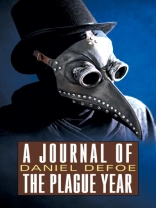The year was 1665 when the plague swept through London. Daniel Defoe was only five at the time but 60 years later relied on his memories as well as those of his uncles and a collection of their journals to create this vivid chronicle of the devastating epidemic, which claimed over 97, 000 lives. The ringing of a bell and the chilling call of “Bring out your dead!” from the collector of plague victims, still fills readers centuries later with terror as Defoe traces the devastating advance of the Bubonic plague through the streets of London.
Through Defoe’s fictional narrator we see a city transformed by the sounds and smells of human suffering in this pandemic known as the Black Death. Reading of some streets eerily empty, and others with crosses on their doors, we bear witness to first hand accounts of the terror and fear that defined the times and the horrifying stories that still scream to be heard. Defoe both historically and fictionally reconstructed events, incorporating memorable, realistic details that give the novel its authenticity. It’s no wonder that parallels of
A Journal of the Plague Year, always a staple of college literature courses, can be drawn to this century’s Covid-19 pandemic, making it even more fascinating and relevant today.
Über den Autor
Daniel Defoe, born Daniel Foe, was an English trader, writer, journalist, pamphleteer and spy. He is most famous for his novel Robinson Crusoe, published in 1719, which is claimed to be second only to the Bible in its number of translations.












